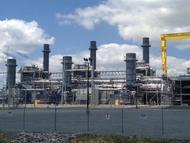In a summary of a recent peer-reviewed paper, the principal author stated that an electric grid predominantly powered by intermittent renewables such as wind and solar would require storage approximately equal to 25% of annual generation to be reliable. Other studies have reported similar results.
US natural gas powerplants produced approximately 1,800,000 GWH of electricity in 2023. The Administration has announced a goal of eliminating natural gas electric generation by 2035. Achieving this goal would require installation of approximately 685 GW of wind and solar rating plate generation, depending on the percentages of wind and solar generation.
Based on the Fekete paper, the US would also require a total of approximately 450,000 GWH of additional electricity storage capacity as the result of the elimination of natural gas generation. The primary battery storage system currently being installed for grid level storage is the Tesla Megapack, which stores 19.3 MWH deliverable at a rate of 4.9 MW over a 4-hour period. Utilizing Tesla Megapacks to support the intermittent wind and solar generation installed to replace US natural gas powerplants would require approximately 23,300,000 units at a current installed cost of $8,128,870 per unit, for a total installed cost of approximately $190 trillion.
Research suggests that battery life can be extended by operating the batteries between 20% and 80% of full charge. Grid scale batteries would be expected to operate below 20% of full charge very rarely, so the lower limit can essentially be ignored. However, limiting the batteries to a maximum charge of 80%, while maintaining necessary electricity storage would require increasing the installed battery capacity by 25%, at an installed cost of approximately $48 trillion, increasing the total battery system installed cost to approximately $238 trillion. (Note: These costs do not include the land required for installation or the cost of grid connection.)
The US currently has an electricity storage deficit of approximately 140,000 GWH. Fossil fueled generation currently provides support for the existing wind and solar generation in the absence of this storage and there is growing concern regarding grid capacity margins during peak demand periods. Therefore, as coal and natural gas powerplants are decommissioned, it would be essential that the current storage deficit be eliminated as well as installing the additional storage required to support the intermittent generating capacity which would provide the generation previously provided by the coal and natural gas powerplants. This would require the installation of approximately 47 million Tesla Megapacks (or equivalent). Currently, production capacity does not exist to meet this demand over the next 11 years.
Also, as coal and natural gas power plants are decommissioned, there will be a growing need for long-duration storage to support the grid through seasonal variation in both wind and solar generation. The only current long-duration systems are pumped hydro facilities. However, it is unlikely that significant additional pumped hydro capacity will be installed in the US because of geographic limitations and public resistance.





![Tesla reviewer breaks down the price of owning an EV versus a gas car in the US: 'Real costs after one year [of] ownership'](https://energynews.today/wp-content/uploads/2023/06/yahoo_news_en-US_s_f_p_168x21_news-90x21.png)






